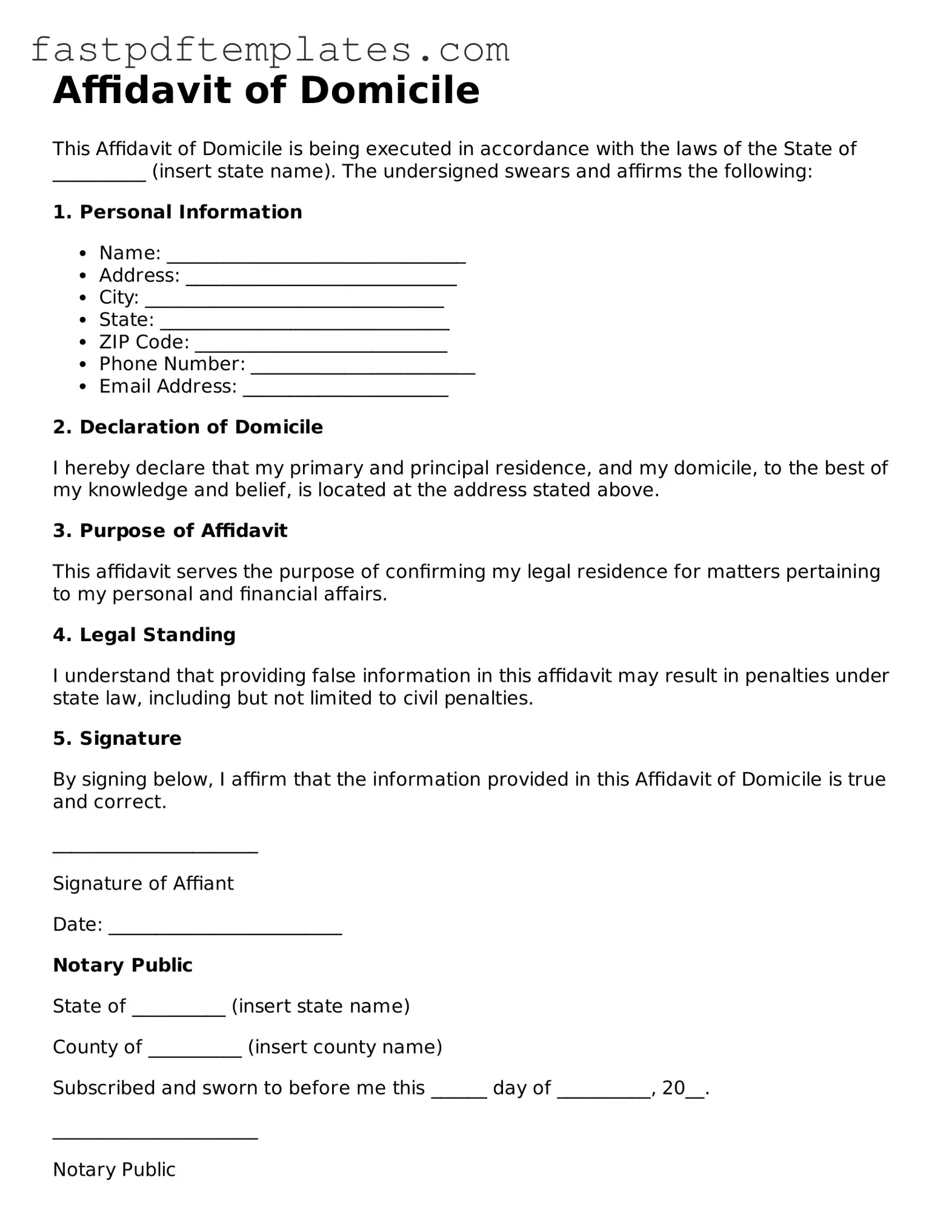Affidavit of Domicile
This Affidavit of Domicile is being executed in accordance with the laws of the State of __________ (insert state name). The undersigned swears and affirms the following:
1. Personal Information
- Name: ________________________________
- Address: _____________________________
- City: ________________________________
- State: _______________________________
- ZIP Code: ___________________________
- Phone Number: ________________________
- Email Address: ______________________
2. Declaration of Domicile
I hereby declare that my primary and principal residence, and my domicile, to the best of my knowledge and belief, is located at the address stated above.
3. Purpose of Affidavit
This affidavit serves the purpose of confirming my legal residence for matters pertaining to my personal and financial affairs.
4. Legal Standing
I understand that providing false information in this affidavit may result in penalties under state law, including but not limited to civil penalties.
5. Signature
By signing below, I affirm that the information provided in this Affidavit of Domicile is true and correct.
______________________
Signature of Affiant
Date: _________________________
Notary Public
State of __________ (insert state name)
County of __________ (insert county name)
Subscribed and sworn to before me this ______ day of __________, 20__.
______________________
Notary Public
My Commission Expires: ______________
